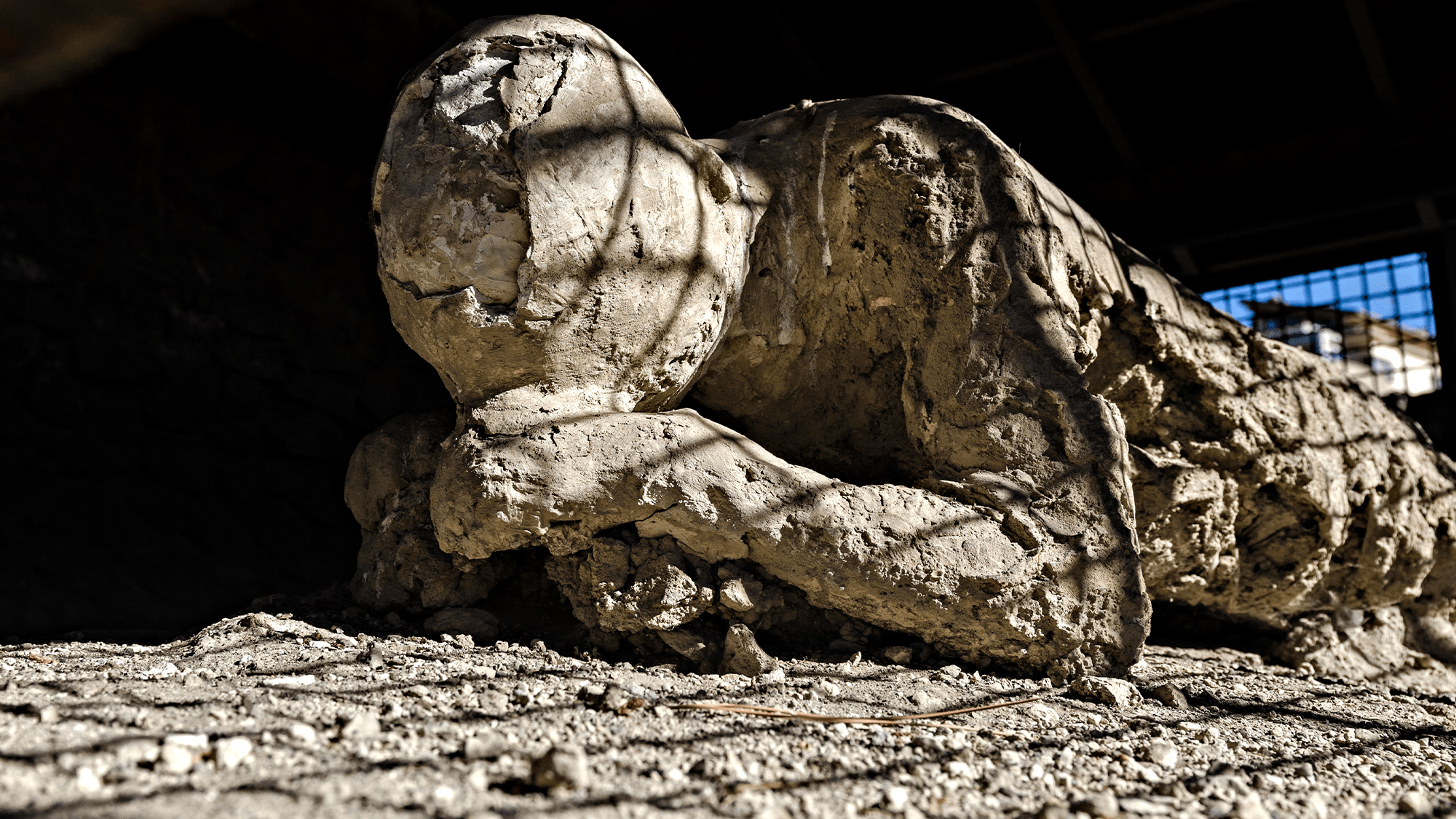

We may earn revenue from the products available on this page and participate in affiliate programs. Learn more ›
As if the cataclysmic eruption of Mount Vesuvius in 79 CE was not enough, a series of violent earthquakes also played a role in destroying the city of Pompeii and killing many of its residents. Scientists are now beginning to understand how these two natural hazards affected one enough. A new study from the Istituto Nazionale di Geofisica e Vulcanologia (INGV) and Pompeii Archaeological Park found that these earthquakes may have made the eruption more deadly.
This work is among the first studies to undertake the complex task of detailing co-occurring earthquakes that happened before and around the time of volcanic eruption. This is difficult because volcanic and seismic effects often happen concurrently or one right after the other. The explosive volcanic effects can overshadow the effects caused by earthquakes and vice versa. The findings are described in a study published July 18 in the journal Frontiers in Earth Science.
[Related: A fresco discovered in Pompeii looks like ancient pizza—but it’s likely focaccia.]
“These complexities are like a jigsaw puzzle in which all the pieces must fit together to unravel the complete picture,” study co-author and INGV volcanologist Domenico Sparice said in a statement. “We proved that seismicity during the eruption played a significant role in the destruction of Pompeii and, possibly, influenced the choices of the Pompeiians who faced an inevitable death.”
A more solid understanding of the cause and effect relationship at play here is key to reconstructing how the eruption and earthquakes affected both the buildings and humans of Pompeii so many years ago.
‘We had tremors for several days’
Roman author Pliny the Younger documented the violent shaking ground as the volcano erupted in two known letters. In his second letter, he wrote, “We had earth tremors for several days, which were not especially alarming, because they happen so often in Campania. But that night they were so violent that everything felt as if it were being shaken and turned over. My mother came hurrying to my room and we sat together in the forecourt facing the sea.”

Like Pliny, many Pompeiians were simply going about daily life when the eruption began sometime around noon on August 24, 79 CE. For roughly 18 hours, small rock and ash particles fell on the city. Many who sought shelter to get away from the debris believed that they were safe. That is, until the ground began to shake.
“The people who did not flee their shelters were possibly overwhelmed by earthquake-induced collapses of already overburdened buildings. This was the fate of the two individuals we recovered,” Valeria Amoretti, a study co-author and anthropologist who heads the Applied Research Laboratory of Pompeii Archaeological Park, said in a statement.
Skeletal clues
While excavating Pompeii’s Casa dei Pittori al Lavoro (which translates to The House of the Painters at Work), the team noticed something off about the collapsed buildings.
“We found peculiar characteristics that were inconsistent with the effects of volcanic phenomena described in the volcanological literature devoted to Pompeii. There had to be a different explanation,” study co-author and INGV volcanologist Mauro Di Vito said in a statement.
They found two skeletons with severe fracture and trauma injuries. Both of the skeletons were the remains of men who were roughly 50 years-old. Based on their positioning, the skeleton designated as Individual 1 was suddenly crushed when a large piece of wall collapsed. The wall caused severe bodily trauma and likely killed him instantly.

However, Individual 2 may have been aware of the danger and tried to protect himself. The team found a round wooden object with faint traces of volcanic deposits on it. It was potentially used as a shield.
According to the team, there were several hints that these individuals didn’t die from extreme heat or inhaling ash. These include the way that their remains are positioned on the pumice lapilli, instead of under it. This suggests both survived to the first phase of the eruption. The pair were ultimately overwhelmed by the collapsing walls when the eruption stopped temporarily and before the arrival of the pyroclastic currents–the hot avalanches of volcanic ash, gasses, and debris that travel along the ground during an explosive eruption.

A doomed fate
Throughout the almost 300 years of excavation at Pompeii, scientists have found evidence that a number of victims could not make it to even temporary safety. Several remains recovered in the ash deposits makes it possible that several fled outside, however hopeless the situation was. There are currently no reliable estimations about how many people died due to volcanic-related causes or from earthquake damage.
[Related: Pompeii’s archaeological puzzles can be solved with a little help from chemistry.]
“New insight into the destruction of Pompeii gets us very close to the experience of the people who lived here 2,000 years ago,” Gabriel Zuchtriegel, director of the Pompeii Archaeological Park, said in a statement. “The choices they made as well as the dynamics of the events, which remain a focus of our research, decided over life and death in the last hours of the city’s existence.”
